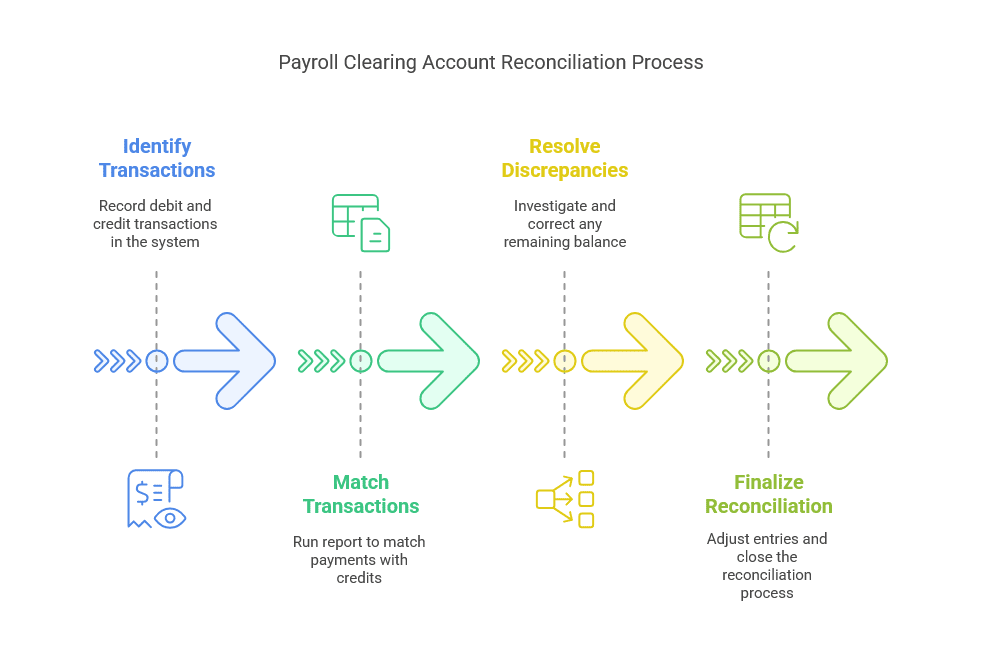Effective management of clearing accounts reconciliation is a cornerstone of robust financial governance in Oracle Cloud Financials. In the General Ledger module, this process ensures that every intermediary transaction is accurately captured and verified before final posting, thereby upholding data integrity, compliance, and operational efficiency.
What is Clearing Accounts Reconciliation?
Clearing accounts reconciliation involves matching and validating transactions recorded in temporary holding accounts. These accounts serve as transitional repositories for transactions such as bank payments, payroll disbursements, intercompany transfers, and AP/AR settlements. Given their temporary nature, these accounts require meticulous oversight to address potential discrepancies arising from timing differences, system anomalies, or incomplete transactions.
These accounts are commonly used for:
- Bank clearing transactions (e.g., payments and receipts that are pending reconciliation).
- Intercompany transactions (e.g., transfers between subsidiaries that require validation).
- Payroll clearing (e.g., payroll payments that need to be cleared before posting to expenses).
- Accounts Payable (AP) and Accounts Receivable (AR) clearing (e.g., invoice payments that require confirmation before final posting).
Clearing accounts reconciliation ensures that these transactions are properly matched and balanced, reducing the risk of errors and improving audit compliance.
Why is Clearing Accounts Reconciliation Important?
Clearing accounts reconciliation is crucial for maintaining financial accuracy, preventing discrepancies, and ensuring compliance with accounting standards. By systematically verifying transactions in clearing accounts, organizations can detect and correct errors before they impact financial statements. This process improves audit readiness by providing a clear trail of reconciled transactions, which enhances transparency and regulatory compliance. Furthermore, it helps businesses optimize cash flow management by identifying pending payments or unallocated receipts, ensuring that funds are accurately reflected in financial reports. Automated reconciliation can also increase operational efficiency by reducing manual workload and minimizing the risk of human error. Ultimately, effective clearing account reconciliation strengthens financial controls, supports accurate decision-making, and enhances overall financial governance.
Effective reconciliation of clearing accounts provides several advantages:
- Financial Accuracy: Ensures that all debits and credits are properly matched, eliminating discrepancies in financial statements.
- Audit Readiness: Establishes a clear and traceable audit trail, reinforcing transparency and regulatory compliance.
- Optimized Cash Flow Management: Identifies pending payments and unallocated receipts, ensuring that financial reports accurately reflect cash positions.
- Operational Efficiency: Automation of reconciliation processes minimizes manual intervention, reducing the risk of human error.
- Regulatory Compliance: Adheres to established accounting standards by maintaining detailed and accurate records.
Setting Up Clearing Accounts Reconciliation in Oracle Cloud Financials
To enable and manage clearing accounts reconciliation in Oracle Cloud, follow these steps:
Step 1: Configure Clearing Accounts
- Access: Setup and Maintenance > Financials > General Ledger > Manage Chart of Accounts Configuration.
- Action: Define clearing accounts within the Natural Account Segment and enable the “Clearing Account” attribute.
Step 2: Enable Reconciliation Rules
- Access: Setup and Maintenance > Financials > General Ledger > General Ledger Configuration.
- Action: Navigate to Manage Clearing Account Reconciliation Rules.
- Define: Reconciliation parameters such as transaction amount, date, and reference identifiers (e.g., invoice or payment ID).
- Option: Configure automatic reconciliation rules to streamline the process.
Step 3: Execute the Reconciliation Process
- Access: Setup and Maintenance > Financials > General Ledger > Period Close Work Area.
- Action: Select “Manage Reconciliations” to review and address unmatched transactions.
- Tool: Run the Clearing Account Reconciliation Report to ensure all items are accurately matched.
Step 4: Automate Reconciliation (Optional)
- Setup: Define the Clearing Account Reconciliation Process within Scheduled Processes.
- Action: Establish automation rules based on predefined matching criteria and schedule periodic reconciliation runs.
Example: Payroll Clearing Account Reconciliation

Scenario
An organization funds its payroll clearing account with $100,000. Subsequently, payroll payments amounting to $98,500 are processed, leaving an unreconciled balance of $1,500.
Reconciliation Process
- Identify Transactions:
- The system records a $100,000 debit to the payroll clearing account.
- The system records a $98,500 credit when payments are processed.
- Match Transactions:
- Run the Clearing Account Reconciliation Report to identify open items.
- The $98,500 credit matches the payroll payments.
- Resolve Discrepancies:
- Investigate the remaining $1,500 balance.
- If an incorrect payment was made, a correcting entry is posted.
- Finalize Reconciliation:
- Adjust the journal entries if needed.
- Close the reconciliation process.
By aligning best practices with Oracle Cloud Financials’ robust functionalities, organizations can streamline clearing accounts reconciliation to achieve enhanced financial accuracy, compliance, and operational efficiency. Leveraging automated tools and clearly defined reconciliation rules not only reduces manual workloads but also fortifies the financial control environment—empowering businesses to make informed, data-driven decisions.
